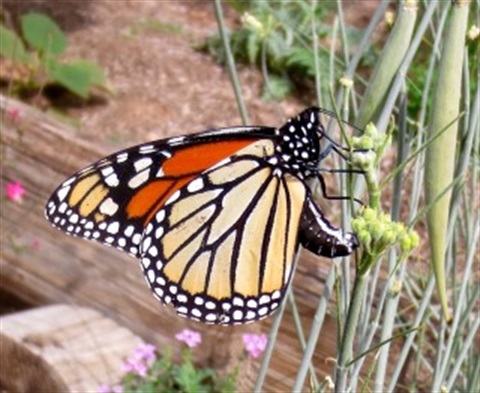Inviting Wildlife to Your Yard

Creating a Wildlife-friendly Landscape
With this Sustainability Savings Tip, you can:
Save Up to $400/YR
Avoid Emissions of CO2: Up to 1,200 lbs./YR
You hear about Monarch butterfly populations being on the decline and bees disappearing due to colony collapse disorder. Even many of our songbirds are experiencing downward trends in population. Is there anything you can do to help? Fortunately, yes! Pollinators and birds worldwide are in decline due to habitat loss, invasive species, parasites, and pesticides. Whether you have an apartment patio, a residential yard, a school garden, golf course, or common area, you can create a wildlife-friendly garden or landscape that helps restore habitat.
Basics
Provide food such as native plants and flowers, shallow water sources, protective cover such as trees and shrubs, and a place for wildlife to raise their young. For butterflies, as an example, this would mean specific plants, such as milkweed for caterpillars to feed upon and nectar plants for adults.
Learn Wildlife Needs
Many local organizations (see below) provide assistance. Mesa has a pocket park at Red Mountain Library, the Monarch Haven & Reading Sanctuary, with plants for Monarchs & other pollinators & even have a labyrinth for humans. Also, watch for plant sales at Desert Botanical Garden and Boyce Thompson Arboretum. Glendale offers a great booklet, Welcome Wildlife to Your Garden.
Ease Up on Clean Up
Allow plants to grow naturally to help create nesting places. Leave flowers to dry so birds can find the seeds. Leave a little litter. It is good for your plants and for insect-eating birds. Reduce or eliminate pesticide use and welcome beneficial bugs.
Get Certified
There are several certifications available, check out these great programs:
- Monarch Waystation: SW Monarch Study has great information, including how to create waystations (a place for Monarchs to rest and feed during migration).
- National Wildlife Federation: Learn how to create a wildlife-friendly garden.
- Audubon Society:
Nina Mason Pulliam Rio Salado Audubon Center: Learn about location & programs.
Desert Rivers Audubon: Offers education programs and bird habitat recognition.
Start Saving
Start saving on your water bill while doing your part to support wildlife and build a sustainable community. Get more sustainability savings tips.
